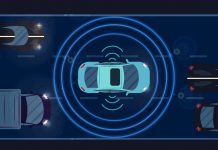– Hyundai Mobis developed the “Safety Integrated Control Module” that integrated the ECUs for both electronic seatbelts and airbags
– It predicts accidents using radar sensors and optimally deploys the safety devices according to the position of passengers…improving safety and efficiency
Hyundai Mobis announced that it developed which ensures increased efficiency and safety in operating automotive safety devices.
This new development combined two separate ECU(electronic control unit)s for airbags and electronic seatbelts into a single unit. It also receives real-time data from advanced radar sensors enabling enhanced protection of passengers upon different driving situations.
In addition, Hyundai Mobis is also finalizing technology for optimally deploying safety devices such as airbags and electronic seatbelts according to the position or movement of passengers.
These technologies are the result of ongoing collaborative work between Hyundai Mobis and Hyundai Motor Company. Being the state-of-the-art technology, such kind is yet to be seen in the global automotive market. Hyundai Mobis aims to apply and mass-produce the fruition of this work on Korea’s domestic high-end sedans starting from 2021.
Safety devices can be generally categorized into two; active and passive. Active safety devices, such as airbags, prevents accidents from occurring and passive ones, such as electronic seatbelts, protects passengers when an accident occurs. The newly developed is technologically valuable outcome as it maximizes efficiency of safety devices by controlling both the active and passive ones using a single ECU.
When this perceives a dangerous situation, e.g. an obstacle on the road or a facing a suddenly stopped car, with the external camera and radar sensor, it warns the passenger by activating and tightening the electronic seatbelt. If a collision is anticipated, it activates the Autonomous Emergency Braking System, and presses the passenger against the seat by adjusting the electronic seatbelt at the same time. If the vehicle collides inevitably, however, it deploys the pre-tensioner and airbag according to the collision strength.
Hyundai Mobis is also planning to secure the technology for predicting the position or movement of the passenger in this process and optimize the airbag by the end of this year. Based on the vehicle sensor data related to speed, this technology estimates what position the passenger is when the accident occurs, and deploys the airbag according to this data to minimize passenger injuries. As it controls the airbag deployment time and pressure according to the position and movement of the passenger, it will be possible to deploy the airbag optimally even if an accident occurs.













